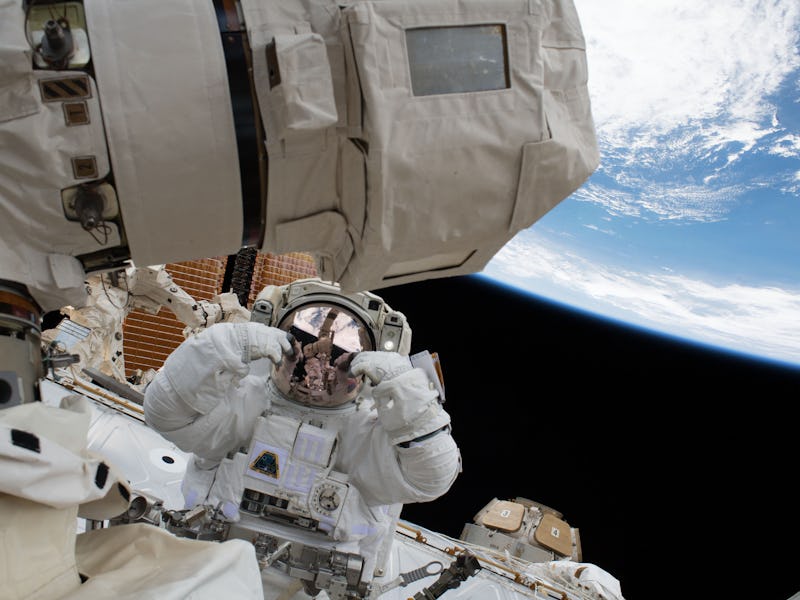More than 12,000 apply to become the next Neil Armstrong
NASA received thousands of applications for its next class of astronauts.

NASA is preparing for a new era in space exploration, one that will see humanity’s return to the Moon more than 50 years later and a possible, very ambitious, trip to Mars within the next decade.
But in order to carry out these missions, NASA is in need of some human resources. Luckily, thousands of people think they are up for the job.
NASA received more than 12,000 applications for its call for the next class of astronauts, and the space agency will begin its selection process in order to enlist a new group of astronauts for the year 2021, NASA announced this week.
The new class of astronauts will be flying to the Moon in these new spacesuits.
“We’ve entered a bold new era of space exploration with the Artemis program, and we are thrilled to see so many incredible Americans apply to join us,” NASA Administrator Jim Bridenstine said in a statement. “The next class of Artemis Generation astronauts will help us explore more of the Moon than ever before and lead us to the Red Planet.”
NASA had put out a call for applications earlier in February, 2020, and young space enthusiasts were encouraged to submit their applications between March 2 and March 31. In order to qualify for the application process, wanna-be-astronauts needed to be a citizen of the United States and have a graduate degree in a STEM field. Previously, NASA had only asked for a bachelor's degree in a STEM field, but upped the qualifications for this year, while decreasing the application period from two months to one.
The number of applications NASA received this year represents the second highest number of applicants the space agency had ever received before, second only to the number of applications by the most recent class of astronauts who just graduated in January, 2020, according to NASA.
Earlier in January, NASA welcomed 11 new astronauts to its pool after they completed two years of basic training. These 11 are the first class of astronauts to graduate from the agency after its lunar plans were put in place, and a couple of them may be sent onboard the Artemis mission to the Moon.
The 11 astronauts were selected from a record breaking 18,300 applications — increasing the total number of active astronauts at NASA to 48.
In the past, NASA kept up to 350 astronauts on deck as part of large-scale missions like Apollo. Therefore, it's going to need a lot more candidates ready to take on the next phase of spaceflight.
Aside from lunar ambitions, the new astronauts may also board the International Space Station, located 250 miles above Earth. There they would take part in NASA’s scientific experiments, following in the space-boot steps of the record breaking astronaut Christina Koch.
Astronaut Koch broke the record for longest spaceflight duration by a female astronaut.
NASA's Astronaut Selection Board will begin by assessing the applicants' qualifications, and invite the most qualified for the job for an interview at the Johnson Space Center in Houston, as well as a series of medical tests.
As part of the application process, candidates undergo a two-hour online assessment, in addition to a long-duration spaceflight physical test.
“We’re able to build such a strong astronaut corps at NASA because we have such a strong pool of applicants to choose from,” Anne Roemer, manager of the Astronaut Selection Board and director of human resources at Johnson, said in a statement. “It’s always amazing to see the diversity of education, experience and skills that are represented in our applicants. We are excited to start reviewing astronaut applications to identify the next class of astronaut candidates.”
NASA hopes to announce a new class of young astronauts by summer, 2021.
Once they are selected, the astronauts will undergo two years of basic training in your average space skills such as spacewalking, robotics, and spacecraft systems. They will also learn crucial behavioral traits to qualify them for space missions such as leadership, ability to follow orders, and teamwork.
Despite growing concerns regarding the spread of the novel coronavirus, and its threat to forthcoming missions to space, NASA is still on schedule for its Artemis I launch, scheduled for April, 2021. This initial phase will set off the return to the Moon, with the final Artemis launch scheduled for the year 2024.
By 2028, NASA hopes to establish sustainable exploration of the Moon, and build a human landing system on the lunar surface. The system will help pave the way for a future human mission to Mars, currently planned for the mid 2030’s.